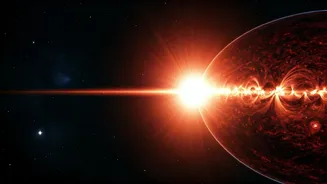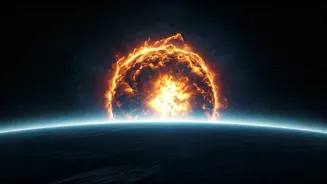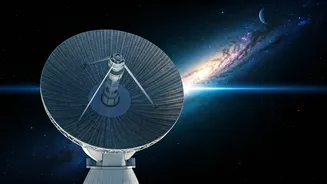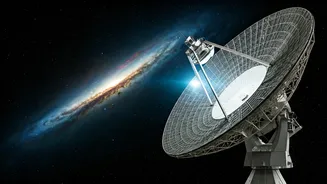Stellar Eruptions Explained
Stars aren't always calm, peaceful entities. They experience energetic outbursts that vary in intensity. Stellar flares, a sudden and bright burst of energy,
are one example. They release large amounts of electromagnetic radiation. Coronal mass ejections (CMEs) are another powerful phenomenon, in which a star expels a huge cloud of plasma and magnetic field into space. The frequency and strength of these events vary, with some stars experiencing more frequent or intense activity than our sun. These energetic occurrences can significantly impact the surrounding planets.
Magnetic Fields: The Key
Magnetic fields play a crucial role in these stellar eruptions. These fields store and release energy, and when the field lines get tangled and reconnect, they cause the energetic events we observe. The Sun's magnetic field is a source of these eruptions, and it's thought that magnetic fields are present in stars throughout the universe. The way these fields are arranged affects the frequency and severity of stellar activity. Understanding these magnetic field dynamics is key to predicting space weather and its effects.
Impacts on Exoplanets
The effects of stellar eruptions on exoplanets can be drastic. Intense radiation and particles from flares and CMEs can strip away a planet's atmosphere. This process can happen through various mechanisms, including heating the upper atmosphere, causing it to escape into space. Exoplanets orbiting close to their stars are particularly at risk, experiencing the full force of these stellar events. The atmosphere is vital for habitability, protecting the surface from radiation and regulating the planet's temperature. If an atmosphere is removed, the planet could become inhospitable.
Observing Stellar Eruptions
Scientists use various techniques to study stellar eruptions. They observe the light emitted by stars across a wide range of wavelengths, looking for changes that indicate flares. They also look for CMEs, often identified by the presence of plasma ejected from the star. Space-based telescopes are very helpful, as they can monitor stars without interference from Earth's atmosphere. Through these observations, scientists can better understand the frequency, intensity, and effects of these eruptions. They also learn more about the stars' properties and activity.
Catching a CME in Action
Recently, scientists observed a stellar CME using data from several telescopes. They saw the ejection of material from the star's corona, the outermost part of its atmosphere. This observation helped provide direct evidence of these events, helping to correlate the appearance of various wavelengths of light to the ejection of matter. Studying such events provides valuable insights into the physics of stellar eruptions and their effects. These observations aid in understanding how stars release energy and how this energy impacts their surrounding planets. It also gives us a preview of what we could expect from our own Sun.
Implications for Habitability
The study of stellar eruptions has significant implications for our understanding of habitable planets. The intensity and frequency of a star's outbursts can play a crucial role in determining whether a planet can sustain life. Planets around active stars may be less likely to develop or maintain life due to the frequent bombardment of radiation and particles that can erode their atmospheres and render the surface uninhabitable. It means that the characteristics of a star play a vital role in determining whether life could exist on the planets orbiting it. This understanding is key for prioritizing exoplanet searches.












